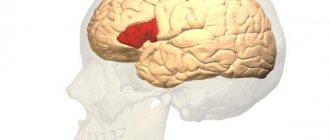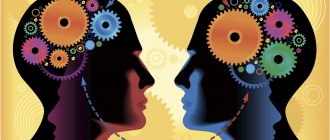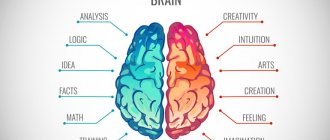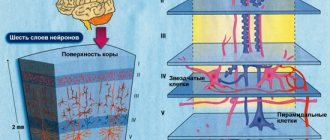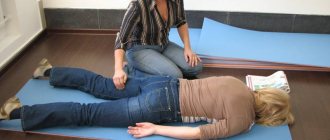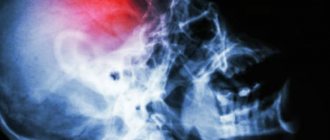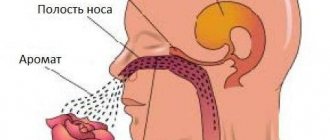The functional parts of the brain are the brainstem, the cerebellum and the terminal section, which includes the cerebral hemispheres. The last component is the most voluminous part - it occupies about 80% of the mass of the organ and 2% of the weight of the human body, while up to 25% of the total energy produced in the body is spent on its work.
The hemispheres of the brain differ slightly in size, depth of convolutions and the functions they perform: the left is responsible for logical and analytical thinking, and the right is responsible for motor skills. Moreover, they are interchangeable - if one of them is damaged, then the other can partially take over its functions.
While studying the brains of famous people, experts noticed that a person’s abilities depend on which half of the terminal section is more developed. For example, artists and poets most often have a developed right hemisphere, since this part of the brain is responsible for creativity.
How is the surface of the cerebral hemispheres formed?
Basic aspects of the physiology of the cerebral hemispheres, or hemispheres as they are also called, using the example of brain development in a child from the moment of conception.
The central nervous system begins to develop almost immediately after fertilization of the egg and already at 4 weeks after implantation of the embryo into the uterine mucosa, it consists of 3 brain vesicles connected in series. The first of them is the rudiment of the anterior part of the brain and, therefore, its cerebral hemispheres, the second is the midbrain, and the last, third forms the rhomboid part of the brain.
In parallel with this process, the birth of the cerebral cortex occurs - at first it looks like a small long plate of gray matter, consisting mainly of a cluster of neuron bodies.
Next, the physiological maturation of the main parts of the brain occurs: by the 9th week of pregnancy, the anterior part increases and forms 2 cerebral hemispheres, connected to each other by a special structure - the corpus callosum. Just like the smaller nerve commissures (superior and posterior commissure, fornix of the brain), it consists of a large bundle of nerve cell processes - axons, located mainly in the transverse direction. This structure subsequently allows information to be instantly transferred from one part of the brain to another.
The rudiment of the cortex, covering the white matter of the hemispheres, also undergoes changes at this time: there is a gradual build-up of layers and an increase in the coverage area. In this case, the upper cortical layer increases faster than the lower one, due to which folds and grooves appear.
By the age of 6 months of the embryo, for example, the left hemisphere of the brain has all the main primary gyri: lateral, central, callosal, parieto-occipital and calcarine, while the pattern of their location is mirrored in the right hemisphere. Then the convolutions of the second row are formed, and at the same time the number of layers of the cerebral cortex increases.
By the time of birth, the final section and, accordingly, the large hemispheres of the human brain have a familiar appearance to everyone, and the cortex has all 6 layers. The growth of the number of neurons stops. The subsequent increase in the weight of the medulla is the result of the growth of existing nerve cells and the development of glial tissue.
As the child develops, neurons form an even larger branched network of interneuronal connections. For most people, brain development ends by age 18.
The adult cerebral cortex, covering the entire surface of the cerebral hemispheres, consists of several functional layers:
- molecular;
- external granular;
- pyramidal;
- internal granular;
- ganglionic;
- multimorphic;
- white matter.
The neurons of these structures have different structures and functional purposes, but they form the gray matter of the brain, which is an integral part of the cerebral hemispheres. Also, with the help of these functional units, the cerebral cortex carries out all the main manifestations of human higher nervous activity - thinking, remembering, emotional state, speech and attention.
The thickness of the cortex is not uniform throughout; for example, it reaches its greatest value in the upper parts of the precentral and postcentral gyri. At the same time, the pattern of the location of the convolutions is strictly individual - there are no two people on earth with the same brains.
Anatomically, the surface of the cerebral hemispheres is divided into several parts or lobes, limited by the most significant convolutions:
- Frontal lobe. At the back it is limited by the central groove, at the bottom - by the lateral groove. In the direction forward from the central sulcus and parallel to it, the superior and inferior precentral sulci lie. Between them and the central sulcus is the anterior central gyrus. From both precentral sulci the superior and inferior frontal sulci extend at right angles, bounding the three frontal gyri - the superior middle and inferior.
- Parietal lobe. This lobe is bounded anteriorly by the central sulcus, inferiorly by the lateral sulcus, and posteriorly by the parieto-occipital and transverse occipital sulci. Parallel to and anterior to the central sulcus is the postcentral sulcus, which divides into the superior and inferior sulci. Between it and the central sulcus is the posterior central gyrus.
- Occipital lobe. The grooves and convolutions on the outer surface of the occipital lobe can change their direction. The most constant of them is the superior occipital gyrus. At the border of the parietal lobe and the occipital lobe there are several transitional gyri. The first surrounds the lower end, which extends onto the outer surface of the hemisphere of the parieto-occipital sulcus. In the posterior part of the occipital lobe there are one or two polar grooves, which have a vertical direction and limit the descending occipital gyrus at the occipital pole.
- Temporal lobe. This part of the hemisphere is bounded in front by the lateral sulcus, and in the posterior section by a line connecting the posterior end of the lateral sulcus with the lower end of the transverse occipital sulcus. On the outer surface of the temporal lobe there are the superior, middle and inferior temporal sulci. The surface of the superior temporal gyrus forms the lower wall of the lateral sulcus and is divided into two parts: the opercular, covered by the parietal operculum, and the anterior insular.
- Island. Located in the depths of the lateral sulcus.
Thus, it turns out that the cerebral cortex, which covers the entire surface of the cerebral hemispheres, is the main element of the central nervous system, which allows you to process and reproduce information received from the environment through the senses: vision, touch, smell, hearing and taste. It also participates in the formation of cortical reflexes, purposeful actions and participates in the formation of human behavioral characteristics.
What are the left and right hemispheres of the brain responsible for?
The entire surface of the forebrain cortex, which includes the terminal section, is covered with grooves and ridges that divide the surface of the cerebral hemispheres into several lobes:
- Frontal. Located in the front part of the cerebral hemispheres, it is responsible for performing voluntary movements, speech and mental activity. It also controls thinking and determines human behavior in society.
- Parietal. Participates in understanding the spatial orientation of the body, and also analyzes the proportions and size of external objects.
- Occipital. With its help, the brain processes and analyzes incoming visual information.
- Temporal. Serves as an analyzer of taste and auditory sensations, and is also involved in understanding speech, forming emotions and remembering incoming data.
- Island. Serves as a taste analyzer.
In the course of research, experts have found that the cerebral cortex perceives and reproduces information coming from the senses in a mirror way, that is, when a person decides to move his right hand, then at that moment the motor zone of the left hemisphere begins to work and vice versa - if the movement is made with the left hand, then the right hemisphere of the brain works.
The right and left hemispheres of the brain have the same morphological structure, but despite this, they perform different functions in the body.
In short, the work of the left hemisphere is aimed at logical thinking and analytical perception of information, while the right hemisphere is a generator of ideas and spatial thinking.
The areas of specialization of both hemispheres are discussed in more detail in the table:
| Left hemisphere | Right hemisphere | |
| No. | The main area of activity of this part of the final department is logic and analytical thinking: | The work of the right hemisphere is aimed at perceiving nonverbal information, that is, coming from the external environment not in words, but in symbols and images: |
| 1 | With its help, a person develops his speech, writes, and remembers dates and events from his life. | It is responsible for the spatial position of the body, namely its location at the moment. This feature allows a person to navigate well in the environment, for example in a forest. Also, people with a developed right hemisphere do not solve puzzles for long and easily cope with mosaics. |
| 2 | In this part of the brain, analytical processing of information received from the senses occurs and rational solutions to the current situation are sought. | The right hemisphere determines the creative abilities of the individual, for example, the perception and reproduction of musical compositions and songs, that is, a person who has developed this perception zone hears false notes when singing or playing a musical instrument. |
| 3 | Recognizes only the direct meaning of words, for example, people who have damage to this zone cannot understand the meaning of jokes and proverbs, since they require the formation of a mental cause-and-effect relationship. In this case, data received from the environment is processed sequentially. | With the help of the right hemisphere, a person comprehends the meaning of proverbs, sayings and other information presented in the form of a metaphor. For example, the word “burns” in the poem: “A red rowan fire is burning in the garden” should not be taken in the literal sense, since in this case the author compared the rowan fruits with the flame of a fire. |
| 4 | This part of the brain is the analytical center of incoming visual information, therefore people who have developed this hemisphere show abilities in the exact sciences: mathematics or, for example, physics, since they require a logical approach when solving assigned problems. | With the help of the right hemisphere, a person can dream and invent the development of events in various situations, that is, when he fantasizes with the words: “imagine if ...”, then at that moment this part of the brain is activated. This feature is also used when writing surreal paintings, which require the artist’s rich imagination. |
| 5 | Controls and gives signals for purposeful movement of the limbs and organs of the right side of the body. | The emotional sphere of the psyche, although not a product of the activity of the cerebral cortex, is still more subordinate to the right cerebral hemisphere, since non-verbal perception of information and its spatial processing, which requires good imagination, often play a fundamental role in the formation of feelings. |
| 6 | — | The right hemisphere of the brain is also responsible for the sensory perception of a sexual partner, while the process of copulation is controlled by the left part of the terminal section. |
| 7 | — | The right hemisphere is responsible for the perception of mystical and religious events, for dreams and the installation of certain values in the life of an individual. |
| 8 | — | Controls movements on the left side of the body. |
| 9 | — | It is known that the right hemisphere of the brain is capable of simultaneously perceiving and processing a large amount of information without resorting to analysis of the situation. For example, with its help, a person recognizes familiar faces and determines the emotional state of the interlocutor by facial expression alone. |
Also, the cortex of the left and right hemispheres of the brain is involved in the appearance of conditioned reflexes, the characteristic feature of which is that they are formed throughout a person’s life and are not constant, that is, they can disappear and reappear depending on environmental conditions.
In this case, the incoming information is processed by all functional centers of the cerebral hemispheres: auditory, speech, motor, visual, which allows the body to respond without resorting to mental activity, that is, at the subconscious level. For this reason, newborn children do not have conditioned reflexes, since they do not have life experience.
Description
Interhemispheric asymmetry of mental processes refers to the functional specialization of the cerebral hemispheres: when performing some mental functions, the left hemisphere is dominant, while others are the right hemisphere.
Functional asymmetry is one of the most important psychophysiological patterns in the activity of the human brain. According to the researchers, asymmetry is associated with optimization of the decision-making process. The right and left hemispheres operate at different frequencies. Twice a day, at the moment of falling asleep and waking up, the frequency is synchronized. At this moment, a person has incomparably greater capabilities.
Nerve pathways from the sense organs go to each of the hemispheres of the brain. The right hemisphere primarily “serves” the left side of the body, and the left hemisphere primarily “serves” the right. Thus, left-handedness, a dominant left eye or left ear may indicate a predominant role of the right hemisphere in the perception and analysis of information.
It is currently believed that the left hemisphere in right-handed people plays a predominant role in expressive and impressive speech, reading, writing, verbal memory and verbal thinking. The right hemisphere acts as the leading hemisphere for non-speech, for example, musical hearing, visual-spatial orientation, non-verbal memory, and criticality.
The mechanisms of abstract imaginative thinking are concentrated in the left hemisphere, and the mechanisms of concrete figurative thinking are concentrated in the right hemisphere, therefore those people in whom emotional-imaginative thinking predominates are called “right-hemisphere”, and those in whom rational-logical thinking predominates are called “left-hemisphere”.
A curious detail noticed by scientists is the ability of asymmetry to change with age. It has been experimentally proven that the dominant hemisphere works more economically and ages more slowly. It should be remembered that the dominance of the right hemisphere will sooner or later manifest itself. For many people who grew up in a left-hemisphere rational world, creativity manifests itself only in the second half of life. Someone suddenly starts cross-stitching at the age of forty, someone paints pictures in secret from everyone.
Left hemisphere of the brain and related functions
Externally, the left side of the brain is practically no different from the right - in every person, the location of the zones and the number of convolutions are the same on both sides of the organ. But at the same time it is a mirror image of the right hemisphere.
The left hemisphere of the brain is responsible for the perception of verbal information, that is, data transmitted through speech, writing or text. His motor area is responsible for the correct pronunciation of speech sounds, beautiful handwriting, and a predisposition to writing and reading. At the same time, a developed temporal zone will indicate a person’s ability to remember dates, numbers and other written symbols.
Also, in addition to the main functions, the left hemisphere of the brain performs a number of tasks that determine certain character traits:
- The ability to think logically leaves its mark on human behavior, so there is an opinion that people with developed logic are selfish. But this is not because such people see benefit in everything, but because their brain is looking for more rational ways to solve problems, sometimes to the detriment of others.
- Lovingness. People with a developed left hemisphere, thanks to their persistence, are able to achieve the object of desire in various ways, but, unfortunately, after acquiring what they want, they quickly cool down - they simply become not interested, and therefore most people are predictable.
- Thanks to their punctuality and logical approach to everything, most “left-hemisphere” people have innate politeness towards others, although for this they often have to be reminded of certain norms of behavior in childhood.
- People with a developed left hemisphere almost always reason logically. For this reason, they cannot accurately interpret the behavior of others, especially when the situation is not ordinary.
- Since individuals with a developed left hemisphere are consistent in everything, they rarely make syntactic and spelling errors when writing texts. In this regard, their handwriting is distinguished by the correct spelling of letters and numbers.
- They learn quickly because they can concentrate all their attention on one thing.
- As a rule, people with a developed left hemisphere are reliable, that is, you can rely on them in any matter.
If a person exhibits all of the above qualities, then this suggests that his left hemisphere is more developed than the right part of the brain.
Features of the hemispheres
The symmetrical sections of the hemispheres provide movement and specific sensitivity equally. However, such averaging does not apply to higher cortical functions, emotions, activation and adaptation processes.
Neurophysiologists classify interhemispheric asymmetry of the brain into:
- anatomical (expressed in the morphological heterogeneity of the hemispheres);
- biochemical (manifested by differences in cellular reactions, content of neurotransmitters);
- psychophysiological (motor, sensory, cognitive-emotional).
Left
The left hemisphere of the brain is responsible for verbal information; it is responsible for a person’s language abilities, controls speech, the ability to write and read. Thanks to the work of the left hemisphere, a person is able to remember various facts, events, dates, names, their sequence and how they will look in writing.
The left hemisphere is responsible for human analytical thinking; thanks to this hemisphere, logic and analysis of facts are developed, and manipulations with numbers and mathematical formulas are carried out.
The left hemisphere of the brain dominates in the following areas:
- coordination of movements of the right side of the body;
- control of speech, reading, writing, recognition and understanding of mathematical symbols, as well as remembering names and dates;
- logical analysis of facts received from outside;
- only a literal understanding of concepts;
- stages in the processing of any information received;
- all mathematical manipulations;
- orientation in time and feeling of one's own body;
- the concept of one’s own “I” and its isolation from the environment;
- predominance of introversion in character;
- logical, symbolic and sequential thinking.
In case of any damage to the left hemisphere of the brain, disturbances, disappearances or deformations of its function are noted. The following pathological conditions may occur:
- impaired ability to generalize received data;
- impairment of the ability to build logical chains;
- various lesions of the speech apparatus (misunderstanding of speech, loss of the ability to speak, and others);
- damage to the written analyzer (failure to understand what is written when perceiving oral speech or the inability to write with normal speech);
- combined lesions of speech and writing;
- violation of time orientation;
- impaired ability to arrange in the correct sequence the tasks that need to be completed to achieve a goal;
- inability to draw conclusions from available facts.
A child with a left-hemisphere dominant often learns to read on his own, because he has memorized the symbols mechanically, but the letters are unlikely to include images in his mind: this can lead to indifference to reading.
Interesting to know! It is also difficult for these children to play games on their own, inventing imaginary events and actions.
Right
The right hemisphere of the brain specializes in processing so-called nonverbal information, which is expressed not in words, but in symbols and images.
Important! It is responsible for imagination; with its help, a person is able to fantasize, dream, and compose. This is also where a person’s abilities for initiative and art are located.
The right hemisphere is responsible for parallel processing of information, that is, like a computer, it allows a person to simultaneously analyze several different streams of information, make decisions and solve problems, simultaneously considering the problem as a whole and from different angles.
Thanks to the right hemisphere of the brain, we make intuitive connections between images, understand a variety of metaphors, and perceive humor. The right hemisphere allows a person to recognize complex images that cannot be broken down into elementary components, for example, the process of recognizing people's faces and the emotions that these faces display.
Therefore, we can identify a certain “area of responsibility” of the right hemisphere:
- reading information from images, symbols;
- representation of images under the influence of music;
- orientation in space;
- collecting puzzles and mosaics;
- perception of musical works;
- understanding the figurative meaning of words and expressions;
- the ability to dream, compose;
- expression of sexuality;
- a penchant for mysticism, religious consciousness;
- control of the left side of the body.
It follows from this that although the left hemisphere of the brain is responsible for logic, speech, event planning and the ability to perform exact sciences, their holistic perception will be impossible without the right half of the brain.
Relationship
The work of both hemispheres of the brain is equally important for a person. With the help of the left hemisphere, the world is simplified and analyzed, and thanks to the right hemisphere, it is perceived as it really is. The intuitive work of the right hemisphere of the brain is based on facts that have been analyzed by the left hemisphere.
Important! If there were no right, “creative” hemisphere of the brain, people would turn into emotionless, calculating machines that could only adapt the world to their life.
It should be noted that the right hemisphere controls the left half of the human body, and the left hemisphere controls the right half of the body. That is why it is believed that a person whose left half of the body is better developed (“left-handed”) has better developed creative abilities. By training the corresponding part of the body, we train the hemisphere of the brain that is responsible for these actions.
In the majority of people, one hemisphere is dominant: the right or the left. When a child is born, he evenly uses the capabilities that were initially inherent in him in different hemispheres.
Interesting to know! However, in the process of development, growth and learning, one of the hemispheres begins to develop more actively.
In addition, the peculiarities of the distribution of functions in the hemispheres and their interaction give a different clinical picture when pathological conditions occur. This is the basis for diagnosing a number of neurological diseases. At the same time, it is impossible to consider interhemispheric asymmetry as the work of isolated structures.
Important! Only the unity of both hemispheres and their coordinated work guarantee the full functioning of the body.
The right hemisphere of the brain and its functions
The specialization of the right hemisphere of the brain is intuition and perception of non-verbal information, that is, data expressed in facial expressions, gestures and intonation of the interlocutor.
It is noteworthy that people with a developed right hemisphere are able to demonstrate their abilities in certain types of art: painting, modeling, music, poetry. This is explained by the fact that they are able to think spatially, without focusing on unimportant events in life. Their imagination is rich, which is manifested when writing paintings and musical works. They also say about such people: “Having their head in the clouds.”
People with a developed right hemisphere also have a number of characteristic features:
- They are overly emotional, and their speech is rich in epithets and comparisons. Often such a speaker swallows sounds, trying to bring as much meaning as possible into the spoken words.
- People with a developed right hemisphere are holistic, open, trusting and naive in communicating with others, but at the same time they are easily offended or offended. At the same time, they are not shy about their feelings - they can cry or become angry in a matter of minutes.
- They act according to their mood.
- Right-brain people are able to find non-standard ways to solve problems; this is explained by the fact that they consider the whole situation as a whole, without focusing on one thing.
Which half of the brain is dominant?
Since the left hemisphere of the brain is responsible for logic and a rational approach in everything, it was previously believed that it was leading in the entire central system. However, this is not so: in humans, both hemispheres of the brain participate in life activities almost equally, they are simply responsible for different areas of higher mental activity.
It is noteworthy that in childhood, in most people, the right hemisphere is usually larger than the left. For this reason, the world around them is perceived somewhat differently than in adulthood - children are prone to fantasies and perception of non-verbal information, everything seems interesting and mysterious to them. Also, by fantasizing, they learn to communicate with the environment: they play out different situations from life in their minds and draw their own conclusions, that is, they gain experience, which is so necessary in adulthood. Subsequently, this information is stored mostly in the left hemisphere.
However, over time, when the basic aspects of life are learned, the activity of the right hemisphere fades away and the body gives preference to the left side of the brain as the storehouse of acquired knowledge. Such disunity in the functioning of parts of the brain negatively affects a person’s quality of life: he becomes unresponsive to everything new and remains conservative in his views on the future.
Which part of the brain is working at the moment can be determined by doing a basic test.
Look at the moving image:
If it rotates clockwise, this means that the left hemisphere of the brain, which is responsible for logic and analysis, is currently active. If it moves in the opposite direction, this means that the right hemisphere, which is responsible for emotions and intuitive perception of information, is working.
However, if you make an effort, the picture can be made to rotate in any direction: to do this, you first need to look at it with a defocused gaze. Do you see the changes?
Short test
It is very easy to determine which of them is dominant at the moment; you need to conduct a simple test that will show the most active side of consciousness. You need to pay attention to the location:
- thumb when intertwining the fingers of both hands together into a kind of fist;
- palms during voluntary clapping;
- forearms when crossing arms over chest;
- legs thrown over one another while sitting.
If the activity of the right side of the body predominates, it means that the left hemisphere is more developed, since it is it that controls it. If it’s the other way around, it means that the person is prone to emotional and illogical behavior and has creative abilities, but he needs to pay more attention to the development of his mind and analytical skills.
Another way to determine the dominant hemisphere is presented in the video below.
Synchronized work of both hemispheres
Despite the fact that the two hemispheres of the telencephalon perceive the world around them differently, it is extremely important for a person that they work harmoniously with each other.
Anatomically, this interaction of the cerebral hemispheres is carried out through the corpus callosum and other adhesions containing a large number of myelin fibers. They symmetrically connect all zones of one part of the telencephalon to another, and also determine the coordinated work of asymmetrical areas of different hemispheres, for example, the frontal gyrus of the right with the parietal or occipital of the left. At the same time, with the help of special neuron structures - associative fibers, different parts of the same hemisphere are connected.
The human central nervous system has a cross distribution of responsibilities - the right hemisphere controls the left half of the body, and the left - the right, while the cooperation of both halves can be clearly demonstrated by trying to simultaneously raise your arms parallel to the floor at a right angle - if this works, then this indicates the interaction of both hemispheres at the moment.
It is known that with the help of the left hemisphere, the world looks simpler, while the right side perceives it as it is. This approach allows a person to find more and more new solutions to difficult situations without complicating the task for himself.
Since the right hemisphere is responsible for emotional perception, without it people would remain soulless “machines”, capable of adapting the world around them to the needs of their life. This is of course not correct - after all, a person would not be a person if he did not have, for example, a sense of beauty or compassion for others.
In most people, the left hemisphere dominates, and in childhood it develops through the perception of information by the right side of the brain, which allows one to significantly expand the experience gained and shape some of the body’s reactions to the world around us.
Since the brain is able to perceive and remember incoming information almost throughout life, with the exception of cases caused by specific diseases, this allows a person to participate in the development of this organ.
What will the development of each hemisphere give?
First, let's summarize: any human activity begins with a comparison of new data with previous experience, that is, the left hemisphere is involved in this process. At the same time, the right side of the brain influences the final decision - it is physically impossible to come up with something new based only on previous experience.
Such a holistic perception of reality allows one not to get hung up only on generally accepted norms and, accordingly, moves a person’s personal growth forward.
The development of the right hemisphere will help a person to more easily come into contact with others, and the left hemisphere will contribute to the correct expression of thoughts. This approach has a beneficial effect on achieving success not only in professional activities, but also in other activities related to communication within society. Therefore, thanks to the coordinated activity of both hemispheres, a person’s life becomes more harmonious.
To develop these abilities, experts recommend doing simple exercises that activate brain activity several times a day:
- If a person is not good with logic, then he is recommended to engage in mental work as much as possible - solve crosswords or frying pans, and also give preference to solving mathematical problems. If you need to develop creative abilities, then you can try to understand the meaning in fiction or painting.
- You can activate the work of one of the hemispheres by increasing the load on the side of the body for which it is responsible: for example, to stimulate the left hemisphere, you need to work with the right side of the body, and vice versa. In this case, the exercises do not have to be too complicated - just hop on one leg or try to rotate an object with your hand.
Examples of simple physical exercises to develop brain activity
"Ear-nose"
With your right hand you need to touch the tip of your nose, and with your left hand you need to touch the opposite right ear. Then we release them at the same time, clap our hands and repeat the action, mirroring the position of our hands: with our left hand we hold the tip of our nose, and with our right hand we hold the left ear.
"Ring"
This exercise is familiar to almost everyone since childhood: you need to quickly alternately connect your thumb with your index, middle, ring and little fingers into a ring. If everything works out without a hitch, then you can try doing the exercise with 2 hands at the same time.
"Mirror drawing"
Sit down, put a large sheet of white paper on the table, and a pencil in each hand. Then you need to try to simultaneously draw any geometric shapes - a circle, square or triangle. Over time, if everything works out, then you can complicate the task - try to draw more complex images.
It is noteworthy that an integrated approach to improving the activity of the cerebral cortex will help not only improve a person’s communication abilities, but will also slow down age-related changes in the psyche - as is known, an active lifestyle and mental work allow a person to remain young at heart and preserve his intellectual abilities.
Development methods
Music lessons will be very useful for anyone, especially piano, accordion, and accordion. The motor activity of the hands and fingers is directly related to the functioning of the brain. When both hands are used at the same time, two hemispheres develop harmoniously at once, getting used to cooperating.
In addition, they are extremely useful for the development of logic, intelligence and memory, as well as imaginative thinking:
- chess and checkers;
- poker, backgammon;
- Monopoly and Scrabble games;
- puzzles and puzzles;
- embroidery and knitting.
Left hemisphere
Since it is known that the left hemisphere controls the right side of the body, it can be activated in two ways: by loading it with the work it is oriented to, and by maximizing the use of the side of the body that it controls.
- Logical tasks You will find a large number of them on the Internet, both individually and collected into games and applications. Play, solving both yourself and getting together with the whole family.
- Exercise To activate the left hemisphere, you need to use the right side of the body. For example, perform normal actions with your right hand (write, brush your teeth, stir tea). For right-handed people this will not be difficult, but for left-handed people it will be more difficult. Also, when performing regular gymnastics, pay more attention to the right side of the body. For example, you can jump on your right leg and bend to the right side.
- Self-massage There are many points on the human body that are responsible for different organs, including the brain. At the base of the big toes there is a point responsible for the cerebellum, and below it are the points of the cerebral hemispheres. By massaging the point under the big toe of your right foot, you activate the left hemisphere.
- Fine motor skills of the hands Fine motor skills of the hands are very useful for the development of the hemispheres. There is a special exercise for this. Place the tip of the little finger of your right hand against the tip of the thumb of your left hand, and the little finger of your left hand against the thumb of your right. Rotate your hands so that the position of your fingers changes places. Then the same should be done with the ring and index fingers.
Right hemisphere
Any creative activity is suitable for developing the right half of the brain - composing music, drawing, writing stories. There are also special exercises that will increase the potential of the right side and make it work at full strength.
- Visualization Close your eyes and imagine a blank white sheet of paper. Now try to see your name on it in your favorite color. Then make the name change color several times. The brighter the picture, the better. You can also use not a “fictional” sheet of paper, but use applications with exercises to train the right part of the brain. Try to name the colors in which the words are written as quickly as possible.
- Motor exercises Some are known to us from childhood, for example, “ear-nose”. With your left hand, grab the tip of your nose, and with your right hand, grab your left ear. Then clap your hands and change hands - now the right one should hold the nose, and the left one should hold the right ear. Anyone who played this game as a child remembers that it worked out much better then. This is due to the fact that in childhood the right hemisphere is more developed (hence the love of drawing and all kinds of creativity in children).
- Tactile Senses Another effective way to develop the right hemisphere is through the use of tactile senses. You can imagine absolutely any images during the exercise. For example, try to feel that you are eating a certain dish, what it tastes like, what you associate with it. To develop creative skills, the same can be done with smell or in any way.
- Finger work Such gymnastics will help develop creative thinking. Try clenching both palms into fists at the same time. After this, straighten the thumb on your right hand and the index finger on your left. Then straighten the index finger on your right hand and the thumb on your left hand. Repeat this exercise several times, speeding up the pace. Alternate and throw other fingers.
- Infinity sign This exercise also helps to effectively develop the right hemisphere and improve creative skills. To do this, you need to press your left ear to your shoulder and extend your left arm forward. Then all attention should be concentrated on the index finger. Draw a figure eight with your hand, starting from the center - up and from the center - to the left. Perform the exercise with your left hand 8 times, and then do the same for your right hand.
In addition, we can highlight a number of recommendations that also have a good effect on the development of creative potential.
- Right-handed people should sometimes use their left hand for writing or daily tasks. It will be difficult at first, but over time the illegible scribbles will turn into elegant handwriting, and new and fresh ideas will appear in the right hemisphere.
- Meditation and visualization are useful not only for mental comfort and activation of the subconscious. It is also a training of imagination and intuition. Even if a person is far from esoteric, it would be useful to imagine the taste of a favorite dish in the mouth or remember the smells of a forest clearing or a perfume that you like, activating your figurative memory. You can simply try to imagine any object with your eyes closed, clearly and in color.
- Constant training of intuition also expands the functions of the PP. You can ask a friend or relative to make a wish for an inanimate object, for example, one of those in the room. Concentrate and try to guess with your inner vision what it could be. When you hear the phone ringing, try to imagine who is calling before answering.
- Drawing pictures, even if you don’t have any special artistic abilities, is a great way to refresh your mind and increase creativity, which even a financial analyst will benefit from. This helps remove excess control. At first, it can be scary to make the first smear, since there is no clear plan of action, which is what people with strong LP are used to, but your imagination will definitely awaken.
- Keeping a diary, writing poems, stories and fairy tales in the evenings for children is not just entertainment, but also very useful activities.
